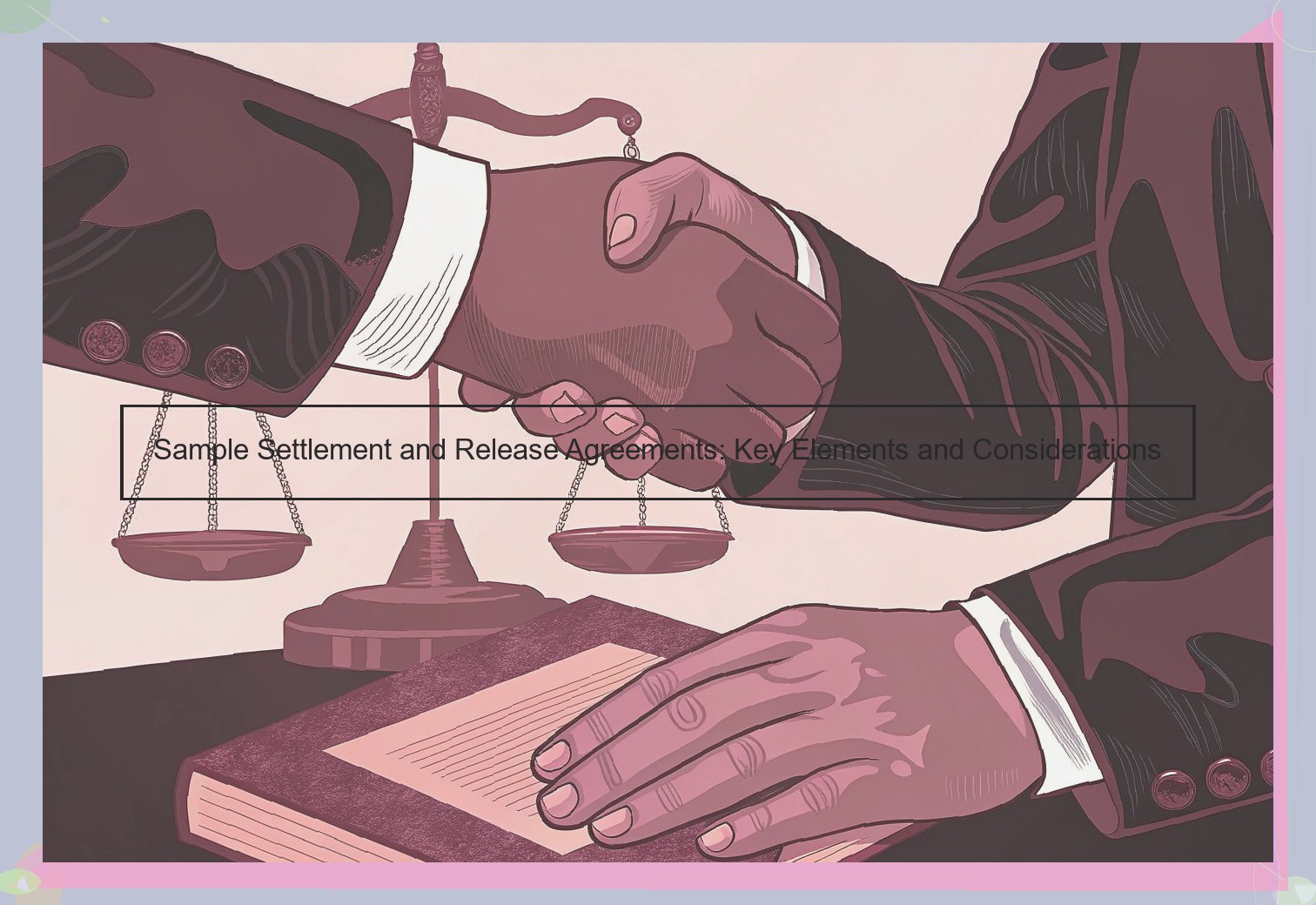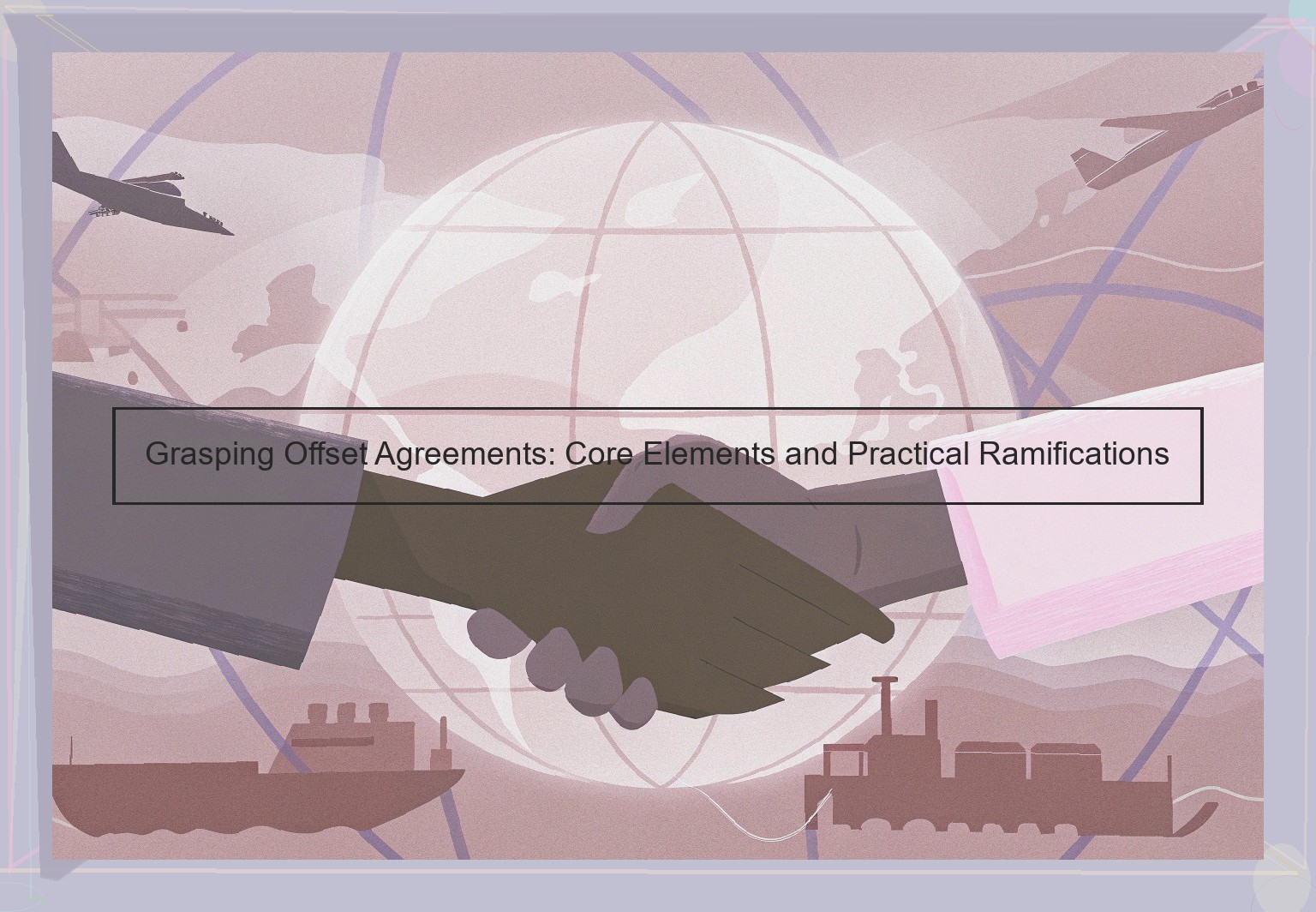What is a Settlement and Release Agreement?
Understanding Sample Settlement and Release Agreements: Key Components and Considerations
A settlement and release agreement is a legal contract, typically drafted and signed in the context of an employment law dispute between an employer and an employee. In simple terms, it aggregates the terms of the parties’ agreement with respect to a specific dispute into one accord which generally contains a release by the employee of the employer, the company, and others from liability emanating from the parties’ relationship. It resolves the dispute between the employee and employer or former employer. It may also resolve disputes with other parties, for example, a stockholder, member of a limited liability company or partner may need to be released by the employee, i.e., the named individual who will be signing the agreement. These contexts that require separate releases are discussed in more detail in the context of specific sample settlement and release agreements, as noted below.
As a general matter, the same employer-employee relationship that led to the dispute, itself, or the existence of the potential in an employment relationship for the onset of a dispute, allows for the settlement and release of claims without a court’s intervention. There must be, however, agreement by both parties to the respective concessions and compromises reflected in the settlement and release agreement. Although the parties do not have to agree on why the dispute arose, both will have to agree on which specific claims have been brought, and which claims will be barred by the effect of the settlement and release agreement. The settlement and release agreement will likewise contain terms specifying the obligations of each party. When settlement and release agreements are used in the employment context , they will usually refer to pre- and post-termination obligations.
Settlements and release agreements many times are used by companies to achieve two goals, the termination of employment with a specific employee, and the limitation or waiver of liability that may flow from the employee’s claims. It also places a value on the employee’s claims, or the price at which the claims are settled, or the threshold at which the employee’s claims are settled. It is also indicative of an aspect of the parties’ relationships, i.e., that the parties have worked together and have a foundation to negotiate a deal.
The settlement and release agreement, as noted above in the employment context, will often use very broad and high-level generalities to describe the dispute, i.e., the company may only acknowledge the parties’ relationship, talk of the short-term or long-term value associated with the person’s employment, and the fact that the parties are settling disputes so that they can move forward separately. It may also provide, in some cases, that the parties had a dispute about document compliance and that the parties are resolving that too, but these will be generalities. The parties may also agree that the underlying story behind the dispute and the parties’ relationship is a private matter and will not be reported on in a settlement and release agreement. The settlement and release agreement is typically a private document, unless one of the parties are publicly traded or there are statutory filing provisions that require the disclosure of the settlement and release agreement.

Settlement and Release Agreement Essentials
A properly drafted settlement and release agreement should include at least the following substantive provisions:
Parties: The parties should be identified in the opening paragraphs of a printed page, preferably electronically numbered paragraphs. If this was a lawsuit, there should be a statement that "Defendant and plaintiff(s) have settled their disputes in this action," and the parties then should be referred to by name hereafter as "Court" and "Defendant," respectively. There is no need for a Plaintiff attachment to the Agreement.
Recitals: Characterizing the nature of the dispute, e.g., "a controversy has arisen among the parties because one alleges that the other (breached contract, was negligent, created liability or nuisance abatement issues, banged his car fender on the Defendant’s petunias, etc.)." Relatively short.
Settlement Amount: This is usually the major number in the Settlement and Release Agreement. It can be a flat amount, or a formula based on a mix of fixed and variable components (e.g., the settlement is $50,000 per decedent, but not more than $250,000). The latter approach allows adjustment depending on the actual outcome. If it is a lump sum allocation, it is governed by the statute of limitations and statute of repose for each type of claim. If a formula, the parties may allocate it however they wish. (In a recent case with multiple parties, the defendant paid different amounts to different plaintiffs for the same loss. While it was made clear that there was no relation between the two, it did provoke some concern by others in the case who perceived that the payments were inequitable).
Waiver of Claims: Depending on the statute of limitations and statute of repose, also should cover claims of which the parties are not aware. Of course, if waiving unknown claims, this could be riskier.
General Release: Should be broad enough to cover unknown and known claims, not just the claims that gave rise to the lawsuit. For example, it should encompass any related tort claims, negligent infliction of emotional distress claims, "derivative" claims, and even harassment and discrimination claims. Additionally, it should encompass related punitive damages claims as well.
The Role of Legalese
The legal language included in a settlement and release agreement is essential in order to ensure that the agreement is not later attacked for ambiguity or vagueness. The parties to the agreement must intend to resolve all disputed claims and this intent must be stated in a way which is clear at the time of the execution of the agreement and remains clear in retrospect as of the time of its execution.
When a settlement and release agreement includes a general release of unknown or unanticipated claims, it is important for such a provision to contain a clear, sufficiently broad disclaimer of the fact that such a release is intended, regardless of how unknown or unanticipated such claims may turn out to be. What this means is that the legal rights that are being released are those "which the releasing party does not know of at the time of executing the release …" Savarese v. Pyrene Mfg. Co., 3 Mich. App. 698, 702 (1966). The law is well settled that "the general principle [is that] a release may ordinarily be effectively made of any claim or demand, known or unknown, at the time of its execution." Perosio v. Golden, 292 A.D. 685,686, 68 N.Y.S.2d 832, 834 (1947).
It is also well settled that "a general release of all claims entered into between disputing parties will be deemed to embrace matters not only actually known, but those which might have been known with reasonable diligence." DeLosier v. Wilber, 19 A.D.2d 307, 237 N.Y.S.2d 284, 288 (1965), citing Restatement of the Law of Torts § 893. The Restatement advises that "a mere disclaimer in respect of unknown claims is not necessary in order to exclude such claims from the operation of a general release, if it is reasonable to infer from all the circumstances that the parties did in fact intend that the release should apply to such claims…If the parties actually intend to exclude unknown claims from the operation of a general release, the better practice is to include in the release an express disclaimer to that effect." Id. When property drafted, even a general release as to unknown claims can be valid.
The key is to make sure that inclusion of a statement that unknown claims are intended to be released, is not omitted. What this means is that if a general release of liability contains a statement that all claims are being released in "said matter or in any way relating to any and all claims related to your employment with Company XXX," that this language should not appear in the release. If the parties to a settlement and release agreement intend to release all of the parties’ previous claims, including unknown claims, against one another on "any matter or related in any way to their relationship", then those specific words should be used in the context of the agreement.
How to Draft an Agreement: A Step-by-Step Process
When a dispute cannot be resolved through negotiation, settlement, or other means, the parties may decide to draft a settlement and release agreement. This is a general starting point for the process: 1) Identify and collectively determine the appropriate agreement; 2) First draft a settlement and release agreement; 3) Amend and edit the draft agreement; 4) Finalize the agreement; 5) Effectuate the agreement.
1. Identify and Collectively Determine the Appropriate Agreement
The first step in drafting an agreement is determining whether a settlement and release agreement or a separate settlement agreement and release of all claims agreement is appropriate. The difference between these types of agreements is that a settlement and release agreement is a broad, catch-all document used to extinguish the causes of action listed above, while the separate settlement agreement and release of all claims is generally used to diminish litigation expenses. A separate settlement agreement and release of all claims explicitly releases claims related only to a specific cause of action by releasing the other party’s corresponding claims.
2. First Draft a Settlement and Release Agreement
To begin drafting an agreement, the drafting party should first determine and plan out all potential terms and contingencies the parties will collectively agree to go into such agreement. All parties should then discuss the procedure in which their agreement shall become effective upon execution. Such procedure could include the timing in which the parties will execute the agreement and if any further additional action is required to finalize the agreement (i.e., execution of mutual general releases of all claims, performing the duties set forth, etc.). Next, the drafting party should draft a statement of mutual conditions set forth and all remedies available for a party’s failure to comply with those conditions.
3. Amend and Edit the Draft Agreement
Once the drafting party has drafted and planned out all of the aforementioned potential terms and contingencies for the agreement, the non-drafting party should review and amend the draft accordingly.
4. Finalize the Agreement
The parties should collectively review the draft agreement and agree to all of the terms and conditions of the agreement before executing it.
5. Effectuate the Agreement
Once the final draft agreement has been executed by both parties, the parties should perform the duties set forth in the signed agreement.
Common Pitfalls and Issues
Common issues and mistakes to avoid when negotiating and executing a Sample Settlement and Release Agreement on Employee Severance Agreement Form and Agreement Regarding Confidential and Proprietary Information and Relationships include (but are not limited to) the following:
- (1) No or poorly worded confidentiality provisions. For example, in a situation where an employee was laid off and asked to sign the Sample Settlement and Release Agreement form, the agreement included a confidentiality clause that prohibited disclosure of any terms of the agreement but that contained an exception for obtaining legal advice. Because this agreement was presented while the employee was not represented by counsel, the employee reasonably believed that the exception permitted him to discuss the agreement with his attorney. In the next paragraph, however, the agreement limited disclosure to necessary parties within the former employer’s own organization. The result was that the employee could not disclose the terms of the agreement even to his attorney, and so signed an agreement with terms he could not fully understand.
- (2) Lack of clarity about what claims are released (or not). Imagine an employee who has a discrimination claim against his former employer under the Equal Opportunity Employment Commission (EEOC), but who signs a settlement agreement releasing his former employer solely from wrongful termination claims. This employee may not realize that the EEOC prohibits discrimination based on any reason, including age, gender, religion, race, and many more. Thus the employee might have released a federal or state discrimination claim that may have been viable. Care should be taken to clearly disclose what claims one is releasing in a sample settlement and release agreement.
- (3) Not utilizing an attorney when drafting or signing insufficient settlement and release agreements . An employee may believe that a severance package is sufficient to sign a settlement and release agreement. If the severance package is high enough, it may effectively pay to have an attorney draft a settlement and release agreement, and an employee without representation may bear the risk of an unfavorable outcome when negotiating such documents on his or her own. Similarly, many employees believe that signing a settlement and release agreement generally means they cannot be later sued for the same events, or conduct similar conduct in the future, even if the settlement and release agreement only releases specific claims, or only one claim.
- (4) Not disclosing all potential claims to be settled in the settlement and release agreement. The example above of the employee with a potential EEOC discrimination claim shows that it is important to identify all potential claims to be settled and released in a sample settlement and release agreement. In a recent case, a high level management employee was terminated but was not provided the standard separation agreement and release despite the company having a policy of always providing such a document. When the employee was later recruited to a senior position at a competitor, he was taken to court for breach of contract when he had clearly violated a confidentiality provision and non-compete covenant in his prior employment agreement.
- (5) Uncertainty about the scope of the settlement and release agreement. Employers and employees should make clear where the agreement may apply, whether to entire states or regions or only certain locations. For example, if the employer only operates in certain states, the settlement and release agreement should be specific to those states to the extent that the release could be considered to apply outside of those states.
When to Consult an Attorney
It is always wise to have a lawyer review some type of significant settlement agreement. Oftentimes, an unsuspecting person believes that someone will do what they say, and that promises to give money are enough. However, it is inevitable that those promises seem less important than other matters. A compromise agreement often includes provisions entitling the other party to something less, but where the amount of money owed is substantial and the person has not made a wise, informed decision it is often useful to use an attorney’s assistance to protect the person’s interest. Further, when negotiating the matter, it can be very useful to have a third party review the circumstances, who does not have a vested interest in how the matter is resolved. These attorneys have seen issues other than the obvious financial ones, and can consider issues from a different perspective.
If the amount in dispute is at least several thousand dollars, it is often useful to spend several hundred dollars with an experienced attorney to draft or review whatever documentation is proposed. An attorney can often find issues with facts that a non-attorney simply would not notice. For instance, when restricted and unrestricted stock options are being used to pay a settlement, the value of the companies/stock can be difficult to determine. Further, tax ramifications rarely are considered by the non-attorney; however, an experienced tax attorney can help significant minimize the amount of taxes due from whatever settlement is provided.
Sample Agreement Templates
Using a sample settlement and release agreement template can often be a good way to get started. However, you should approach the issue with caution. There are pros and cons to using, and reusing, such templates:
• The pros: Sample settlement agreement and release templates can save time, by getting you to a place further along in the process than you otherwise would have been. They provide a good starting point for negotiations. Coming to a settlement and release agreement template process with a proposal, instead of having to create one "from scratch," can put you ahead and give you an advantage in negotiations. This can speed things up, which can save parties money .
• The cons: Using out-of-date templates that that have not been modified to comply with up-to-date case law, statutes, and regulations, can end up being a double-edged sword. It can expose companies to unnecessary liability. A settlement and release agreement template can also weaken your negotiating position, if you use one that is "out of series" or that the other party has used "often before." If the terms it contains are favorable to the other party, then doing so gives the other party a boost and puts you at a disadvantage.
For any company, it is essential to secure an enforceable settlement and release agreement template. It should be drafted taking into account up-to-date case law, statutes, regulations, procedures, and industry standards, including nuances specific to the industry sector to which your company belongs.


